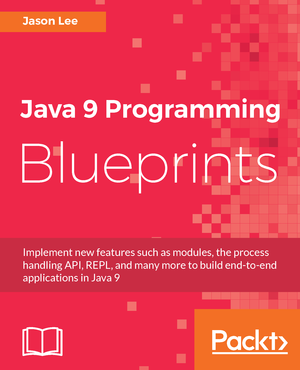One of the results of the Oracle purchase of Sun has been an increased focus on testing — not that we didn’t test GlassFish before, but it was mostly manual in my area of the server. The task of automating this fell to me, and, after a little — ahem — testing, I settled on Selenium.
Byron Nevins, a colleague of mine here at Oracle, has a couple of nice blog entries showing how to run GlassFish as a service, both as root and non-root users, on Ubuntu or Debian. As a Gentoo user, that doesn’t help me much, unfortunately, but, some time ago, I developed a script that works great for me, so I thought I’d share it here.
Yesterday brought us Part III in our look at some new components in Mojarra Scales. Today, Part IV brings us sc:combo, combination, if you can imagine that, of a h:selectOneMenu and h:inputText.
In Part II of this series, I introduced the new auto complete component in Mojarra Scales. In this installment, we’ll take a look at two new closely related components, sc:imageZoomer and sc:lightbox.
I’ve been an iPhone user for about 1.5 years now. I’m mostly happy with it, but I’d kinda like to write applications for it. The problem, though, is that the iPhone uses Objective-C (and I don’t consider writing web apps the same thing as writing an iPhone app ; ). Enter Google’s Android. I can use my existing Java knowledge to write applications for an Android device, giving me a much smaller learning curve. The question, then, is which device should I get? There are several available, unlike the iPhone, so the choice can be difficult.
Recently, I ran across 6 of the Best Android Mobile Devices, which has a pretty nice run down of six different devices, not all of which are phones. The problem with this particular comparison, was that each phone was on a different page, making comparison more difficult as I had to switch tabs a lot. My solution, then, is the table below. Inspired by the link above, though taking most of the data from the devices' product pages, I’ve compiled the following table. Obviously, this isn’t every Android phone on the market. I took the three listed in the article above, and added one other phone that I’ve been considering. Hopefully this table will be helpful in those looking at these devices.
As 2009 winds down to a close, it is my hope that you and your family have a very merry Christmas. It is my prayer that in the hustle and bustle of the season, the real meaning — the birth of the Savior of the world, Jesus Christ — is not lost:
Do not be afraid. I bring you good news of great joy that will be for all the people. Today in the town of David a Savior has been born to you; he is Christ[a] the Lord. — Luke 2:10-11
In Part I, I introduced the new YUI-backed Scales dataTable component. In this installment in the series, we"ll take a look at another new component available in Scales 2.0, sc:autoComplete.
This is a little late notice, but we at Sun are holding a "virtual conference" covering GlassFish v3, Java EE 6, etc. You can find details here. It starts in 30 minutes (10:00 CST, 8:00 PST). :)
While we’re making product announcements, I might as well mention that NetBeans 6.8 is available today as well. I really think NetBeans is the best Free <del>Java</del> multi-language IDE on the market. It’s by no means perfect, but I like it a lot.1 Quoting from the release:
Today, the GlassFish team is pleased to announce the release of GlassFish v3. This release marks the first production-ready release of a Java EE 6 compliant application server. It also marks the culmination of a tremendous engineering effort to transform the very capable but monolithic GlassFish v2 into a small, sleek and scalable modular system, built on OSGi. You can get all the details over at The Aquarium.
Of all the features in this release, the two I’m the proudest of are the console, on which I work during the day, and JSF 2, on which I work when I can. The console, while it looks similar to that in v2 (somewhat by design), has undergone a pretty serious makeover. We’ve removed the frameset, which solved a number of issues on both the client and the server, we introduced the use of the YUI LayoutManager to help with the page layout, and we implemented Ajax-based navigation (which was one of my major tasks, along with Ken Paulsen). The result is, I think, a lighter, faster console. It posed some interesting challenges, but I think we were able to work everything out to make a very nice and snappy console. We’re not resting on our laurels, though. Like the rest of the server, our team has some grand plans for upcoming releases in the console.
On the backend, we had to do a fair amount of rework to accomadate all the changes made to support the modularity introduced for v3. For example, as we demonstrated at a Hands-on-Lab at JavaOne, the console is pluggable, which allows developers, OEMs, admins, etc to create and install plugins that add functionality to the console. In fact, that’s how we delivered all of the non-core functionality in the console. If you’re running the web profile, you won’t see anything JMS-related, for instance.
The other feature I’m pretty proud of is JSF 2. As an Expert Group member and sadly not-too-active-committer (at the moment) on Mojarra, the JSF implementation we ship with GlassFish, I’m really, really pleased with how JSF 2 turned out. In what spare time I can find, I’ve been doing some application development as well as component development using the new spec, and it’s been a joy to work with. From annotations to composite components and more, JSF 2 is just really easy to work with (I hope to blog more on that in the near future).
In addition to those, v3 offers CDI (via Weld), JPA 2, EJB 3.1, Servlet 3.0, and on and on. There should be something for everyone, so do yourself a favor and check it out. I don’t think you’ll be disappointed.
 My name is Jason Lee. I am a software developer living in the middle of Oklahoma. I’ve been a professional developer since 1997,
using a variety of languages, including Java, Javascript, PHP, Python, Delphi, and even a bit of C#. I currently work for Red Hat
on the WildFly/EAP team, where, among other things, I maintain integrations for some MicroProfile specs, OpenTelemetry, Micrometer,
Jakarta Faces, and Bean Validation. (Full resume
My name is Jason Lee. I am a software developer living in the middle of Oklahoma. I’ve been a professional developer since 1997,
using a variety of languages, including Java, Javascript, PHP, Python, Delphi, and even a bit of C#. I currently work for Red Hat
on the WildFly/EAP team, where, among other things, I maintain integrations for some MicroProfile specs, OpenTelemetry, Micrometer,
Jakarta Faces, and Bean Validation. (Full resume 